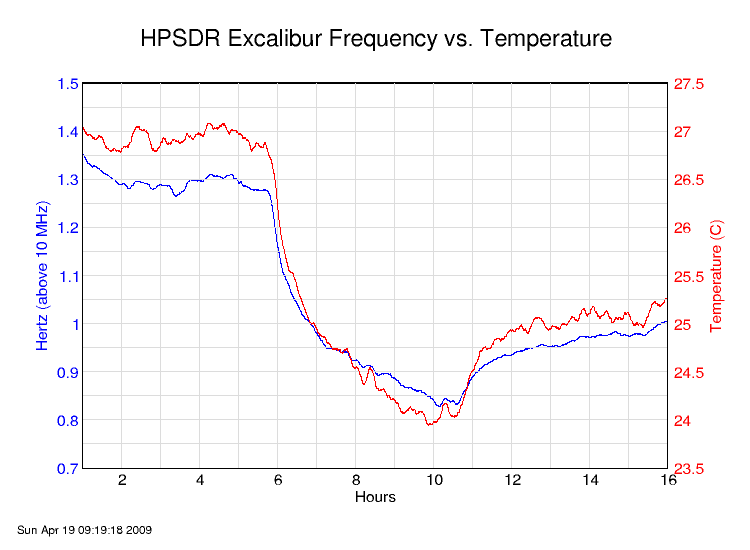Introduction
A lot of my recent time and frequency measurement work has been related to GPSDOs — GPS Disciplined Oscillators.[1]There are now multiple GNSS (Global Navigation Satellite System) systems so saying “GPS” is a bit US-centric. But at least for now, virtually all GNSSDOs use GPS. Most hams and experimenters know what GPSDOs are, because they have become ubiquitous as frequency references in shacks and labs, but perhaps you’re not aware of what’s under the hood.
I hope this series will change that. We’ll start with understanding the strengths and weaknesses of crystal oscillators, then in part 2 see how GPS can be used as a frequency standard. In part 3, I’ll compare XO and GPS performance. Finally, part 4 will put it all together to show how a GPSDO works.
Crystal Oscillators
In this first part, I’ll describe the strengths and weaknesses of crystal oscillators as frequency and time standards. Later parts will talk about how GPS can be used as a time and frequency reference, and then we’ll see how crystals and GPS can work together to create a GPSDO.
Crystal Oscillators
Quartz crystal oscillators (XOs) have been used since the 1920s to generate (relatively) precise and (relatively) stable RF frequencies, and for decades were the best frequency standards available, period. As atomic frequency standards were developed they took over the championship, quartz oscillators continue to be widely used.
Crystal oscillators come in many flavors: there are plain old XOs, temperature compensated XOs (TCXOs), oven controlled XOs (OCXOs) and even double-oven oscillators (“DOXCOs). Their size, power consumption, and cost can vary widely depending on their performance.
While XOs were a huge step forward in frequency stability, they bring with them a few problems.
The first is that they require calibration. The physical dimensions of the piece of quartz, the type of oscillator circuit, and environmental factors all affect the oscillation frequency, and calculation can only get you so close to the desired value. So, crystal oscillators initially need to be set to frequency by measuring them against a known-correct reference.
Next, temperature is an important part of the equation. Because the oscillation frequency of a quartz crystal depends on its physical dimensions, and all materials change size with temperature, temperature changes will directly affect the output frequency. In fact, Hewlett-Packard used to make a couple of high-precision thermometers that used quartz crystals as sensors.[2]Humidity, barometric pressure, and acceleration also affect the frequency. The best OCXOs have ovens that maintain the crystal and associated components to within 0.001 degree C, but even they will be affected by external temperature changes. Below is a plot of how a TCXO ‘s frequency tracks changes in room temperature.

Finally, quartz oscillators also suffer from drift — their frequency will change over time, and the rate and even direction of that change isn’t predictable.[3]This phenomenon is sometimes called “aging”, but technically aging is just one of several types of drift. Some of it is due to physical changes as the crystal or other oscillator components age, and some of it is just due to the uncertainties of quantum mechanics.
Here is how the frequency of an inexpensive eBay OCXO changed over 24 hours as it aged:

The frequency gradually moves upward over the day. Aging usually slows down after an XO has been running uninterrupted for a while, and you can see the curve start to flatten out toward the end, showing that effect.
We’ve seen that crystal oscillators aren’t perfect — they require calibration, they are sensitive to temperature and other environmental factors, and they change frequency over time. The performance of XOs can vary over several orders of magnitude, and some are better at one thing than another. There are several key characteristics of an XO that we might want to know:
- How stable the frequency is over short time periods, usually less than a day (short term stability)
- How much the frequency changes over long time periods, usually a day or longer (long term stability, or often the shorthand of drift or aging)
- For radio frequency applications, how much modulation is on the theoretically pure signal carrier (phase noise)
We often plot stability and phase noise data on a logarithmic graph that can show performance over a wide time period or frequency range. For stability analysis, the statistic that is most commonly used is the Allan Deviation. I put up a post describing Allan Deviation that might be interesting and/or useful to you.
You’ve seen that crystal oscillators have some weaknesses, and lurking in the background is a question: how do you calibrate or measure an XO? Maybe you can use a better XO as a reference, but then how do you calibrate that? Etc., etc.
In the next part of this series, I’ll talk about how the GPS system allows you to get precise time (and frequency) in the palm of your hand. Can it be the answer to life, the universe, and everything?
References
| ↑1 | There are now multiple GNSS (Global Navigation Satellite System) systems so saying “GPS” is a bit US-centric. But at least for now, virtually all GNSSDOs use GPS. |
|---|---|
| ↑2 | Humidity, barometric pressure, and acceleration also affect the frequency. |
| ↑3 | This phenomenon is sometimes called “aging”, but technically aging is just one of several types of drift. |

3 comments
[…] part 1 of this series, I described the strengths and weaknesses of crystal oscillators. The moral of that story was that […]
[…] part 1 and part 2 of this series, we saw that crystal oscillators and GPS receivers both have strengths […]
[…] far in this series, we’ve seen the strengths and weaknesses of both crystal oscillators and GPS receivers, and then compared those […]